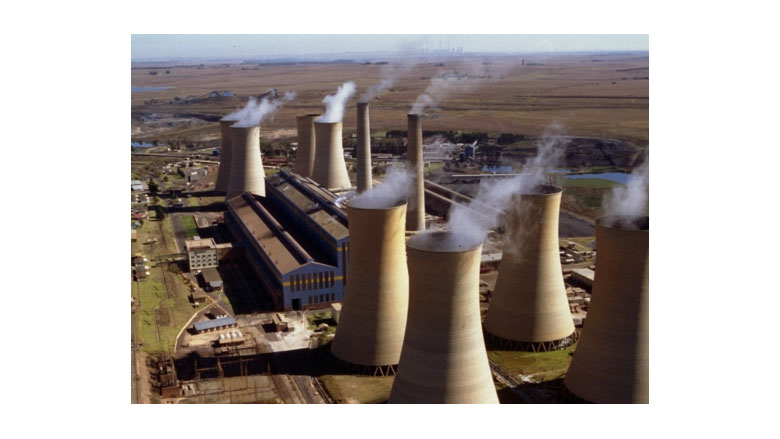The World Bank has approved $497 million in loans and other assistance to finance decommissioning and repurposing of one of the world’s largest coal-fired power plants—the 1,000-MW Komati facility in South Africa that is owned by its largest public power utility, Eskom.
The Komati plant, permanently shut down in October, will be repurposed for 220 MW of renewable energy, including a 150-MW solar photovoltaics facility, 70 MW of wind power generation and150 MW of onsite storage batteries, “which together will help to improve the quality of electricity supply and grid stability” said the bank.
The renewable energy sources will adapt existing power transmission infrastructure used by the decommissioned coal-fired plant. The last of its nine units closed Oct. 31. The units, five of them at 100 MW capacity and four that were 125MW each, were commissioned and brought online between 1961 and 1966.
Contractors for the installation of the new renewable power installations have not yet been announced.
Eskom has been shutting down the Komati station units in phase, with employees being retrained, in a partnership agreement with the South African Renewable Energy Technology Centre of the Cape Peninsula University of Technology, and the Global Energy Alliance for People and Planet
The workers will temporarily be transferred to other coal power stations, with Eskom giving assurance “no employees will lose their jobs because of the closure of the coal plant.”
The Komati closure is the initial phase of South Africa’s implementation of its Just Energy Transition (JET) strategy that outlines how the country intends to transition from a carbon-intensive economy.
Currently, coal power plants supply up to 86% of South Africa’s 45GW of installed capacity. The government plans to decommission up to 24GW of the county's coal plants by 2050, according to its 2019 Integrated Resource Plan.
“Reducing greenhouse gas emissions is a difficult challenge worldwide, and particularly in South Africa given the high carbon intensity of the energy sector,” said World Bank Group President David Malpass.
Electricity generation in South Africa accounts for 41% of its CO2 emissions, mainly due to operations of Eskom’s fleet of 15 coal-fired power plants that provide 38.7 GW of the country’s 52.5 GW pf installed capacity.
“This project is critical to our understanding of the sustainability of decommissioning, repurposing, and mitigating the socio-economic impacts for workers and communities before we scale up the move of the power sector into a low-carbon path,” said South Africa's Minister of Public Enterprises, Pravin Gordhan.
South Africa expects to gradually retire 12 GW of the country’s old and inefficient coal-fired power fleet by 2030 and increase private development of renewable energy sources of up to 18 GW during the same period, according to Gordhan.
Financing for Komati coal plant decommissioning and repurposing project include a $439.5 million World Bank loan, a $47.5 million concessional loan from the Canadian Clean Energy and Forest Climate Facility, and a $10 million grant from the Energy Sector Management Assistance Program.


Post a comment to this article
Report Abusive Comment